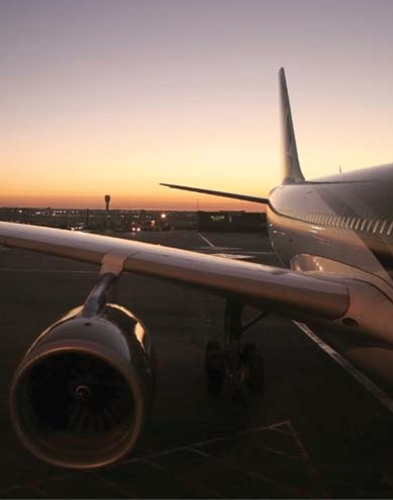
Aviation Insurance can broadly be split into four main categories:
• Airline Hull and Liability Insurance
• Aviation Products Liability Insurance
• Airport Legal Liability Insurance
• General Aviation Hull and Liability Insurance
Each category requires different information to enable insurers to assess the risk to be insured. For example, Airline risks need to provide data on their fleets showing growth plans over coming years, full maintenance details paying particular attention to who will be conducting the airframe, engine, hydraulic and avionic maintenance. Other data needed includes pilot qualification requirements of the airline and details of ongoing recurrent training plans for the pilots, the annual utilisation of each aircraft in hours flown but even more relevant are the number of take off’s and landings proposed in the year as these are considered to be the most critical aspects of flights. Estimated passenger numbers carried throughout the year and passenger load factors are also required as is the route structure of the operation. From time to time we are asked to quote on new start up airlines – in this event full financial backing details are required together with a copy of their business plan. Of course the airline’s five to ten year claims record is also an absolute requirement.
Information for General Aviation risks is similar to Airlines but much less detail is required. Concentration is given to the uses of the operation, for example helicopters can perform a multitude of different tasks so exact descriptions of use are required. Annual utilization for each type of use must be provided. Particular attention is paid to pilots, their experience, especially hours flown on the type of aircraft in question and the Insured’s ongoing training programme. Routing, maintenance and loss record information is also required.
Product Liability has a different set of information requirements which largely surround the product being manufactured itself, whether it is considered critical or otherwise. Some clients manufacture a variety of products so submissions to underwriters can be large and complex. Overall revenue figures are required for all manufactured products with splits for each item of products to enable underwriters to assess how much manufacturing is of a critical nature. These can be subdivided further between military and civilian sales.
Due to the long tail liability associated with product liability risks a ten year loss record is normally required.
Also under the Product Liability banner fall risks associated with maintenance, repair and overhaul of aircraft. Again details are required as to whether such work is performed on engines (critical) or airframe (less critical) or other areas, revenues to be provided for the respective areas. Values of aircraft held in the hangar are required as is the maximum accumulation of aircraft held in a hangar at any one time.
Airport Liability covers a wide area of risk which not only provides for the airport’s legal liability to aircraft and passengers passing through the airport, but many associated risks as well. Some of these risks relate to fuelling of aircraft, ramp services, cargo handling, hangarage, vehicles operating airside, catering, security and construction. Many of these risks are placed separately from the airport risk and demand different information requirements, for example fueling risks need to supply gallonage throughput for the year whereas a ramp service provider would have a variety of vehicles operating airside performing a variety of functions, all of this needs to be specified together with their revenue earnings. As with all classes of insurance, loss record details are essential to the underwriting process.
Often there are many peripheral insurances that make up a coverage package for clients so we also have markets for Hull War Risks, Hull Deductible Insurance, Aircraft Leasing, Loss of Use, War Third Party Liability, Spare Parts, Engine Breakdown, Crew Loss of Licence and Personal Accident.
Cooper Gay’s Aerospace Division has grown significantly in the last year following the acquisition of Heath Lambert’s, plus a large proportion of Benfield, aviation teams. This development has given Cooper Gay a real market presence and an impressive CV of clients. In addition to the risks mentioned above Cooper Gay Aerospace also have capability for Space Insurance which demands a whole new skill set and completely different information requirements.



